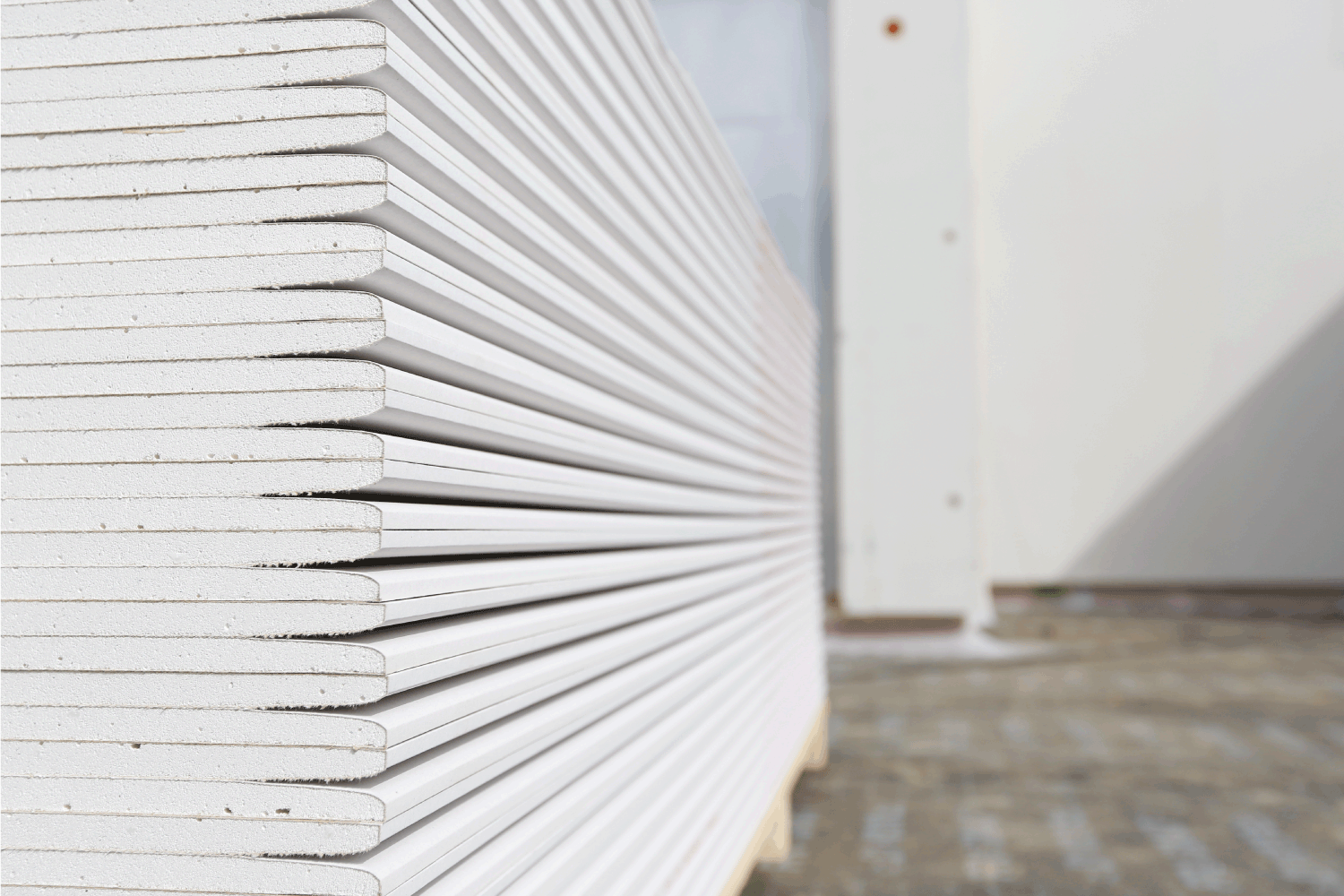Full renovations mean tackling the ceiling with the rest of the room. Whether hiring a contractor or doing it yourself, it's a good idea to know what to do with the ceiling. You've probably heard about different ways to place ceiling drywall and you come to the question, does ceiling drywall need to be staggered? We've done the research for you to find out!
While it may not be necessary to stagger ceiling drywall, there are a lot of advantages to it. Staggered drywall panels make the connecting joints less visible for a more seamless look. It can also add strength to the ceiling due to the weight being more evenly distributed.
Preparing yourself before such a big project will make sure your work lasts. We'll be taking a look into what types of ceiling drywall there is, the codes for drywall, different thickness sizes of panels, and much more! Keep reading to find out some awesome tips and tricks.

Categories of drywall
Options, options, options. There won't just be one drywall to pick up and go when you walk into your local hardware store. Depending on the different building codes and the room you'll be placing the drywall in, different versions of drywall will be needed.
Standard
A very popular choice in residential buildings, standard drywall will work in most open rooms. This is simply designed drywall that won't make you overthink if it was the right look. It can be used for ceilings and walls and often used to finish basements.
Mold/Moisture Resistant
If you've gutted your bathroom or small washroom, a moisture resistant drywall will be a life saver. These panels come with a paper back and a special coating to withstand humid locations. You can also use this type of drywall in the kitchen and laundry room where there could be a lot of steam.
Fire Resistant
As the name suggests, fire resistant drywall panels are made extra thick with glass fibers and can be required in certain rooms to keep up with building codes. One of the main features of these panels is the prevention of fire spreading and slowing down the speed of the fire. It is recommended to use this type of drywall in utility rooms and garages.
Soundproof
A great drywall choice for townhomes or two-story houses with connecting ceilings. Soundproof panels are thicker than standard drywall as it made from two layers glued together with special glue. If you're able to, adding fiberglass insulation will also cut down on traveling noises.
What Is Code For Drywall On Ceilings?
Codes will need to be checked for your specific area of the building, whether you have a historic home or not, what type of room it'll be going in, and what state you live in. For example, in Florida, the drywall building codes are known as R702s. Contractors will be able to take care of this for you, but it's a good idea to check with your local permits department.
Both residential and commercial buildings will need to comply with the R302.9 outline for the use of materials that meet the flame spread and smoke development codes. There are also different thickness requirements for ceilings based on whether or not adhesive is being used. For example, a ceiling without adhesive and 16-inch frame spacing will need to have a 3/8 thick panel.
Can You Use 1/2 Inch Drywall For The Ceiling?
There are four common ceiling drywall sizes: 1/4, 3/8, 1/2, and 5/8. 1/2-inch panels are considered the standard for ceilings. The thickness of the panel makes them easy to lift and hang. Also, since they're lighter, the panels won't put as much stress on the ceiling frame.
This is when it's important to check building codes. Based on the distance of your ceiling frame joints, a thicker drywall panel could be required. While 1/2-inch panels can be used on 16 inch spaced joints, anything further apart will need 5/8 panels.
The lighter the panels at a greater distance could run the risk of the ceiling sagging. A tip for adding more durability is to hang the ceiling first and then install the walls after and have them run sideways. Not only is it adding another point of strength, but it helps you work from top to bottom and ends up being easier to manage.

Usage of sizes
1/4-inch thick drywall is the thinnest option. This would be a good choice for laying over existing drywall the has slight blemishes. The next slightly thicker choice is the 3/8-inch drywall. It has a similar usage as 1/4-inch drywall and can be used for larger patch jobs on existing drywall.
The most common size, 1/2-inch, is often used for interior settings. They are easy to carry but if the weight is still too much for you, some brands offer an ultra light option with the same strength. Finally, there are the 5/8-inch panels. The thickest and therefore strongest is the first choice for fire resistant codes and help with soundproofing.
Which Way Do You Run Drywall On The Ceiling?
Take into consideration how much time and effort you'd like to spend on the ceiling. Having the drywall staggered horizontally will be much more time consuming but also give the ceiling more strength. This method also requires more time spent on the proper joint compound application.
Click here to view this joint compound on Amazon.
To avoid seams, you'll want to run drywall perpendicular to the ceiling joists. This design will give you less visible joints because they'll float over the framing. This is a good method if you have uneven joists. Of course, with staggered ceilings, you can also create different designs throughout. Therefore, using the correct thickness, screws, and adhesives, gives you more room to play.
Is Lightweight Drywall Good For Ceilings?
Approved lightweight drywall will have the same qualifications as standard drywall. You'll be able to find the same thickness and strength in lightweight drywall with also 13 pounds less than the average panel. When installing lightweight drywall in a bathroom, make sure your local building codes don't require a cement back board if it isn't moisture resistant.
It's a great choice for smaller rooms that won't have heavy insulation above them. 1/2-inch and thinner drywall typically can hold between 1.2 and 1.6 pounds per square foot without extra support. Check with a building inspector if needed to reduce the likelihood of sagging and cracking.
A consideration to also keep in mind is that lightweight drywall might not be as soundproof as standard drywall. You may also experience easier edge breakage on lightweight panels if not handled properly. The last thing to think about is the cost. Since the weight isn't as demanding, the price could be more expensive for ease of use.
In Closing
Staggering ceiling drywall will give you an overall more seamless look. You'll have more options for the layout and design with staggering but can run into more work depending on your local building codes. 1/2-inch drywall is a standard choice for ceiling thickness as it provides strength and reduces sagging. Now you'll be ready to go into the hardware store and pick which panels work best for you!
Check out these posts before you go:

